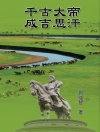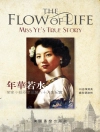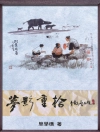In ‘The Love Letters of Dorothy Osborne to Sir William Temple, 1652-54’, readers are transported back to the 17th century to uncover a collection of heartfelt correspondence between Osborne and Temple. The letters are written in a captivating epistolary style, providing a glimpse into the personal lives, emotions, and societal norms of the time. Osborne’s writing is poignant and eloquent, showcasing her deep affection for Temple amidst the challenges of their forbidden love. This book not only serves as a romantic tale but also as a valuable historical and literary document reflecting the traditions and constraints of the period. It is a timeless exploration of love, duty, and societal expectations in the 17th century English society. Dorothy Osborne was a remarkable woman whose personal experiences and relationships with William Temple undoubtedly influenced her writing. As an accomplished letter writer, her words reveal a woman of great intelligence, wit, and passion. Osborne’s own struggles in love and life are subtly woven into the fabric of her letters, making them all the more compelling and relatable. I highly recommend ‘The Love Letters of Dorothy Osborne to Sir William Temple, 1652-54’ to readers interested in historical romance, epistolary literature, and the social customs of 17th century England. This intimate collection offers a rare and authentic glimpse into the hearts and minds of two individuals navigating the complexities of love and duty during a tumultuous time in history.
Mengenai Pengarang
Dorothy Osborne (1627-1695) was an English letter writer and notable figure in literary history, whose personal correspondence has shed valuable light on the private and public life of the seventeenth century. Daughter of Sir Peter Osborne and Dorothy Danvers, Osborne was educated at home, learning various languages and literature which later influenced her epistolary style. She is best known for her collection of letters, ‘The Love Letters of Dorothy Osborne to Sir William Temple, 1652-54’, which were exchanged during their courtship and offer a fascinating glimpse into her intellect, wit, and the constraints of her period. These letters stand out for their literary merit, engaging narrative and historical insight, capturing the tumultuous era of the English Civil War and Interregnum. Not originally intended for publication, her letters were preserved and later published, revealing her literary prowess and emotional depth. Osborne’s style, marked by clarity, vivacity and unaffected grace, bridged a personal archive with the broader canon of English literature. Her contributions, although limited in quantity, remain significant as they exemplify the capacity of personal correspondence to transcend its private origins and resonate within the cultural and historical consciousness.












